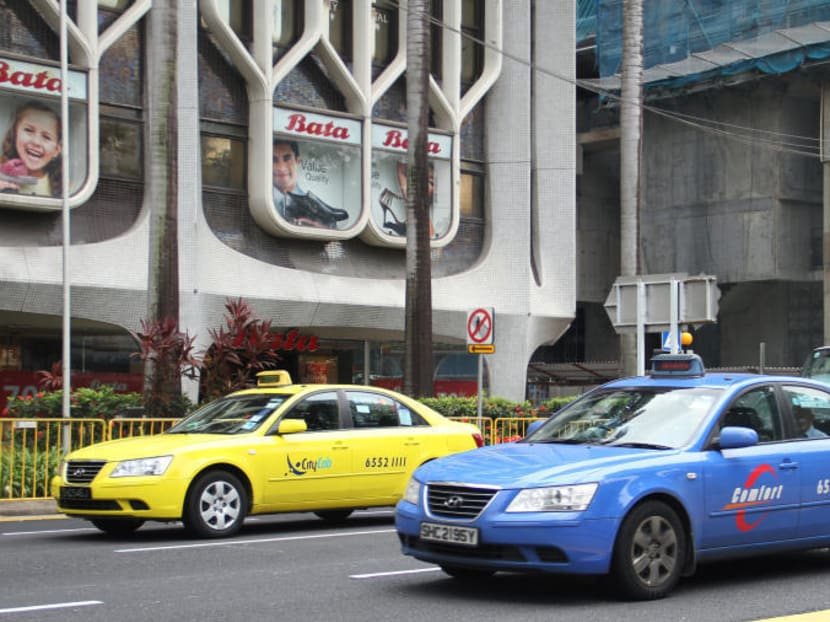More taxis available to commuters since introduction of availability standards
SINGAPORE — Over 2,000 more taxis were made available to commuters during peak periods in the first four months of this year compared to 2012, before the introduction of the Taxi Availability Standards.
SINGAPORE — Over 2,000 more taxis were made available to commuters during peak periods in the first four months of this year compared to 2012, before the introduction of the Taxi Availability Standards.
The Land Transport Authority (LTA) provided the update today, as it announced a change in how it computes taxi availability — to be based on the companies’ hired-out fleet instead of its registered fleet. The new method is applied retrospectively from Jan 1.
This adjustment takes into account feedback from the National Taxi Association and taxi companies, said the LTA, noting that availability standards remain unchanged and companies that fail to meet the mark will face financial penalties.
Acknowledging that a small percentage of each taxi company’s fleet may be unhired at any one time, the LTA said that using only the hired-out fleet to compute taxi availability “removes the variation arising from the unhired taxi fleet and measures the efficiency of hired taxis more accurately”.
“Importantly, taxi drivers would not have to increase their mileage to make up for the non-performance of the unhired taxis.”
The percentage of hired-out taxis on the roads during peak periods increased from 82.4 per cent in 2012 to 90 per cent in the first four months of this year.
Over the same period, the percentage of taxis plying at least 250km daily has increased from 74.7 per cent to 80.7 per cent, while the proportion of total taxi mileage used by passengers increased from 64.9 per cent in 2013 to 67.8 per cent in the first four months of this year.
“These results indicate that more taxis are plying the roads, and more commuters are able to get a taxi. For taxi drivers, the rise in taxi utilisation rate means that there has been less empty cruising, and they are earning revenue during a larger proportion of the time that they are plying the roads,” said the LTA.
TAXI COMPANIES’ PERFORMANCE IN FIRST FOUR MONTHS OF 2015
When it comes to the percentage of taxis on the roads during peak periods, the LTA said Comfort, CityCab and SMRT consistently met the requirements in the first four months of 2015.
They had at least 60 per cent of their hired-out fleet plying the roads during the shoulder peak periods of 6am to 7am and 11pm to 12 midnight, and at least 85 per cent during the core peak periods of 7am to 11am and 5pm to 11pm.
Trans-Cab met the standard in February, March and April, while Premier met the standard in January, February and March.
Prime did not meet the standard.
When it comes to meeting the minimum 250km daily mileage, Comfort consistently met the standard in the first four months of 2015, said the LTA. At least 85 per cent of its fleet met the minimum mileage on weekdays and 75 per cent of its fleet meet the requirement on weekends and public holidays.
CityCab met the standard in January, March and April, while Trans-Cab met the standard in March and April.
Premier, SMRT and Prime did not meet the standard in the first four months of this year.
The LTA said it has served notices of penalties to SMRT for the months of January and February, and to Prime for the months of January, February and March 2015.







